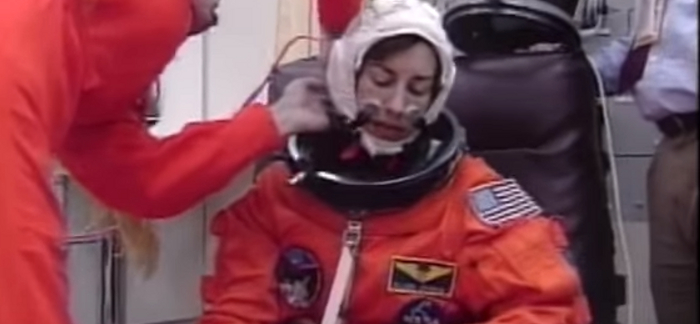When it comes to iconic structures in the US, the Hoover Dam is definitely in that conversation. It’s named after Herbert Hoover, who pushed for its construction when he served in the federal government as Secretary of Commerce and then later as the nation’s President. It is a fitting name considering Hoover himself was also an engineer.
1. An Expensive Proposition
When Hoover Dam was built, it would be the most expensive engineer project that the US had ever started. In the 4 years it took to construct the dam, the cost was $49 million. Putting that investment into today’s monetary value, that’s about $700 million. The cost has much to do with its arch gravity design. Hoover Dam stands 726 feet tall at its highest point and is 1,200 feet wide. The base of the dame is 660 feet thick.
Even the contractor that was eventually hired to build the dam had to put together a $5 million performance bond before they’d be awarded with the project. It required 6 companies to come together, pooling their resources, to get the contract.
2. Built For a Purpose
The idea that Hoover Dam was built to create a reservoir is not entirely correct. The dam actually has several purposes. It was initially created to help control local flooding and provide some infrastructure for irrigation. In 1936, just one year after it was finished, electrical power generation was also added to the dam’s purpose. With 17 turbines active, more than 1 million people can benefit from the power that Hoover Dam is able to create.
3. A Different Name
Before the dam was named after Herbert Hoover, the original name was to be Boulder Dam. This is because the original site of the dam was supposed to be at Boulder Canyon. After surveying the site, however, the dam was moved to where it stands today because it could control the waters of the Colorado River more effectively.
4. Huge Tunnels
To build the dam over a 4 year period, something had to be done with the Colorado River. Engineers created tunnels around the work site that would funnel the river water away from its original course through the cliff faces. One of those tunnels was more than 3 miles long and had a diameter of more than 3 miles as well to accommodate seasonal flooding. The tunnels had to be drilled out by a specific time, so many workers would spend 10 hour days in 140F temperatures to get the job done. It would take 18 months altogether, including a 6 day strike that happened in August 1931.
5. It’s a Money Maker
It isn’t just the electricity that helps Hoover Dam pay for itself. Lake Mead was created as a reservoir behind the dam and it is the largest artificial reservoir of its kind in the US. It offers visitors over 500 miles of shoreline to enjoy. At its deepest point when full, Lake Mead has a depth of 590 feet. This allows visitors a chance to enjoy water sports, go swimming, and do some fishing during their stay in the area.
6. A Hollywood Icon
Hoover Dam is an impressive sight to see. It is also the perfect location for numerous films that have been produced over the years. From Alfred Hitchcock’s Saboteur to the recent release of San Andreas, the dam is often destroyed in film as part of the dramatic element. Even Superman wasn’t able to initially save the dam before the Man of Steel reversed time by flying around the planet in the opposite direction.
7. Don’t Forget About the Bridge
Part of the Hoover Dam complex today includes the O’Callaghan-Tillman Bridge. The dam is on US Route 93 and was the primary crossing point in the area to go over the Colorado River. This road was often crowded, had sharp hairpin turns, and visibility could be horrible. People put up with this for 45 years until the new bridge was built to ease congestion and make travel safer. The bridge would open in 2010 after meeting its $240 million budget.
The bridge itself is also unique in that it is the widest and longest type of structure in its design in the Western Hemisphere.
8. The Formation of Las Vegas
With the investment into Hoover Dam at the height of the Great Depression, many families descended on the Las Vegas and the surrounding areas in the hopes that they would find some work there. Eventually the formation of Boulder City came about because there were so many workers and their families in the area.
Working at Hoover Dam was far from safe. Workers needed to prepare the cliff walls so the dam could have a proper seal. Sometimes they were suspended over 800 feet in the air with jackhammers to prep the surfaces. This is where many of the casualties of the project occurred, either from workers falling, equipment falling, or rocks falling – sometimes all at the same time.
9. Massive Concrete Additions
Workers at Hoover Dam mixed the concrete on-site so that it could be immediately placed into position. Cable ways were installed to help hoist entire sections of the prepared concrete into place. Buckets of fresh concrete were able to reach dam workers in as little as 78 seconds. The heat of cooling concrete and the 120F temperatures of the desert summer also required almost 600 miles of piping so that water could be run through as a cooling agent for the dam.
10. There Wasn’t a Plan
This is perhaps the most amazing fact about Hoover Dam there is. The companies, the government, and even the architects behind the building of the dam didn’t really have a plan. They just got to work building something that would be amazing. Even the visual components of the dam weren’t added by the architect until the actual structure began to form and build upward. Eventually 5 million barrels of cement and 45 million pounds of reinforcements would create what would be at the time the tallest dam in the world.
How much concrete was used? If the concrete was used for roads, it could pave a connection from New York City to San Francisco.
Engineers had long dreamed that they would be able to control the flooding of the Colorado River every season. This wild river was indeed tamed and allowed more than 2 million acres to have irrigation. This fueled the eventual development of the American Southwest. When you see it for yourself, it is easy to see why it has been named as one of the 7 modern civil engineering wonders created by the United States.
More than 10 million people see Hoover Dam every year. Will you be one of them?




